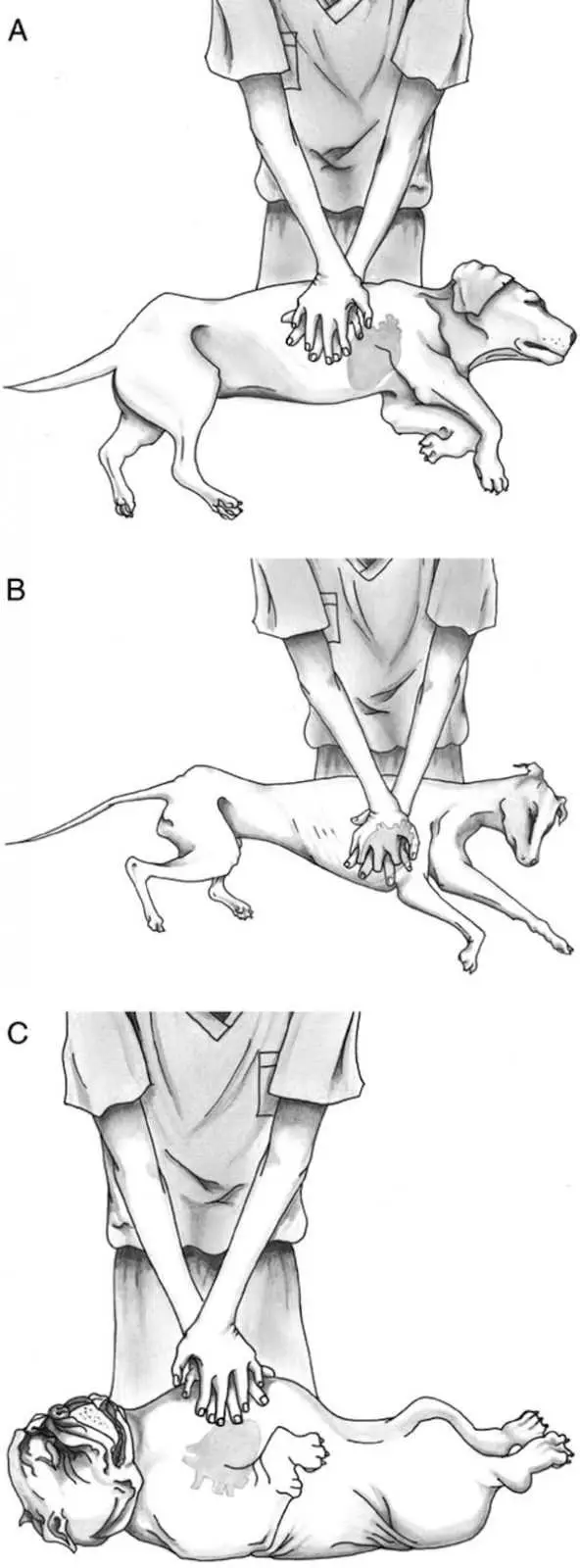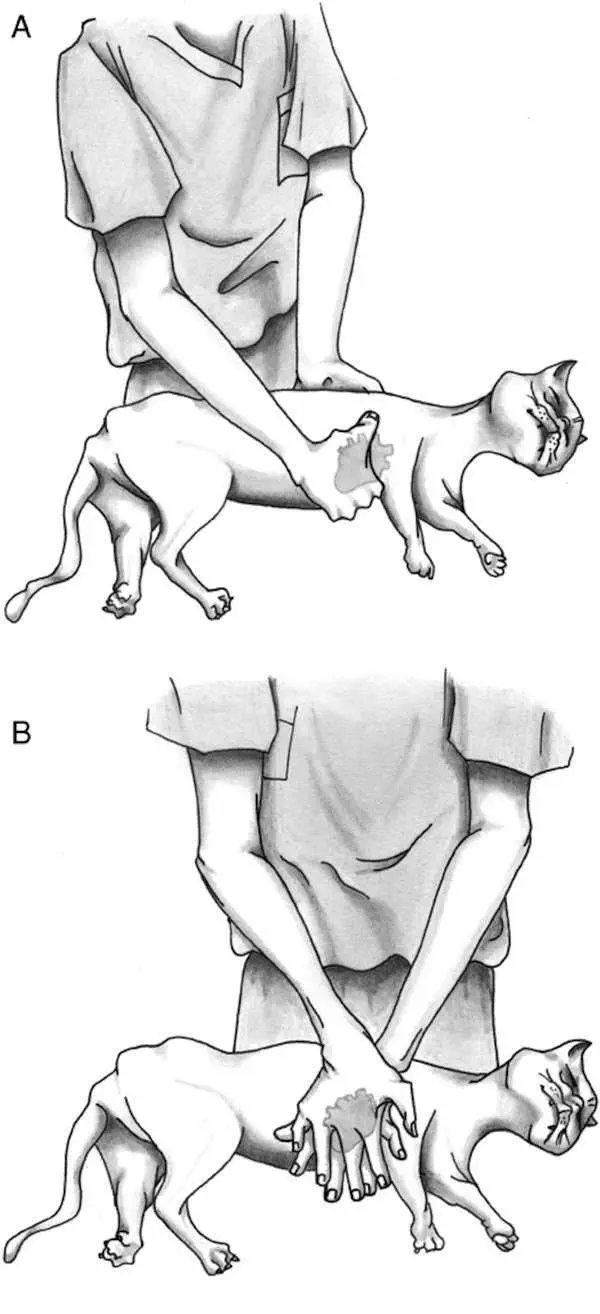CPR For Cats and dogs: This Is Exactly What To Do In Case Your Pet Can’t Breathe
What do you do if your pet suddenly stops breathing? Knowing a couple of emergency procedures for your pets in case of choking or breathlessness, could save your valuable pet’s life. Since you might not have enough time to get to a vet in these critical situations, every pet owner should review and learn the steps for performing CPR on their pets.
CPR (cardiopulmonary resuscitation) preserves blood flow to an animal’s brain until proper blood circulation and breathing is restored.
Here is a list of signs to watch for when CPR may be required. These signs and symptoms can occur after drowning, choking, electrical shock, or other situation.
- unconsciousness,
- low arousal,
- low physical movement, or eye blinking.
If your pet has a foreign object stuck in their throat, you should try to dislodge it first before performing CPR. Read this article: Heimlich Maneuver for dogs.
Performing mouth-to-snout resuscitation
The Reassessment Campaign on Veterinary Resuscitation (RECOVER) produced a guideline for performing CPR practices on dogs. Their recommendations are:
Perform 100-120 chest compressions each minute
- Every 30 compressions should be followed by 2 breaths of mouth-to-snout ventilations.
- Perform cardiac massage / chest compressions based on the different chest sizes and types of dogs (see diagrams below).
The important thing to remember for CPR is remembering the ABCs: Airway, Breathing, and Cardiac compression.
To do the 3 techniques, adopt these measures.
- Lay your dog on the flat working surface and extend the head to create an airway. It is recommend to lay your dog on his/her right side (heart facing up),
- Open the jaws to check on for obstructions, and when any exist and aren’t easily removed, attempt to dislodge the item using Heimlich Maneuever for dogs.
- Cup both hands round the muzzle from the dog’s mouth to ensure that just the nostrils are showing. Blow air in to the nostrils with 5 or 6 quick breaths, again, with respect to the size your dog. Small dogs and young puppies and wish short and shallow breaths. Bigger dogs need longer and much deeper breaths. Continue the fast breaths for a ratio of 1 breath every three seconds or 20 breaths each minute.
- Look for heartbeat by placing your finger on the inner leg, just over the knee. Should you not feel a pulse, place your ear on the dog’s chest cavity where the elbow touches the center of the chest area. Should you still not find a pulse, get someone else tocontinue breathing in to the nostrils (mouth to snout), while another gives chest compressions / cardiac massage. If you’re alone, perform the compression and mouth-to-snout ventilation yourself.
- Provide the dog chest compressions (cardiac massage) by putting both of your palms below the chest cavity of the dog. For many dogs, chest compressions can be carried out around the largest area of the chest as the dog is laying on his side.
- Figure (A) illustrates the process for many dogs. You are able to apply chest compressions towards the largest area of the chest as the dog depends on its side.
- Figure (B) illustrates the process for dogs with keel-formed chests.
- Figure (C) illustrates the process for barrel-chested dogs.

Image credit: Journal of Veterinary Emergency and demanding Care
For small cats and dogs chest compressions could be administered two ways.
- Figure (A) illustrates wrapping one hands round the sternum while supporting the rear.
- Figure (B) illustrates two-handed compression.

Image credit: Journal of Veterinary Emergency and demanding Care
Here is a video on administering CPR on dogs. [Note: The instructional video below recommends a compression to ventilation ratio of 15 compressions adopted by 1 breath. The June 2012 study recommends a compression to ventilation ratio of 30 compressions adopted by 2 breaths.]
Source: DogHeirs.com.
